Is your kombucha not as fizzy as you would like? We’re walking through all the reasons your kombucha isn’t carbonated (and how to fix it)!
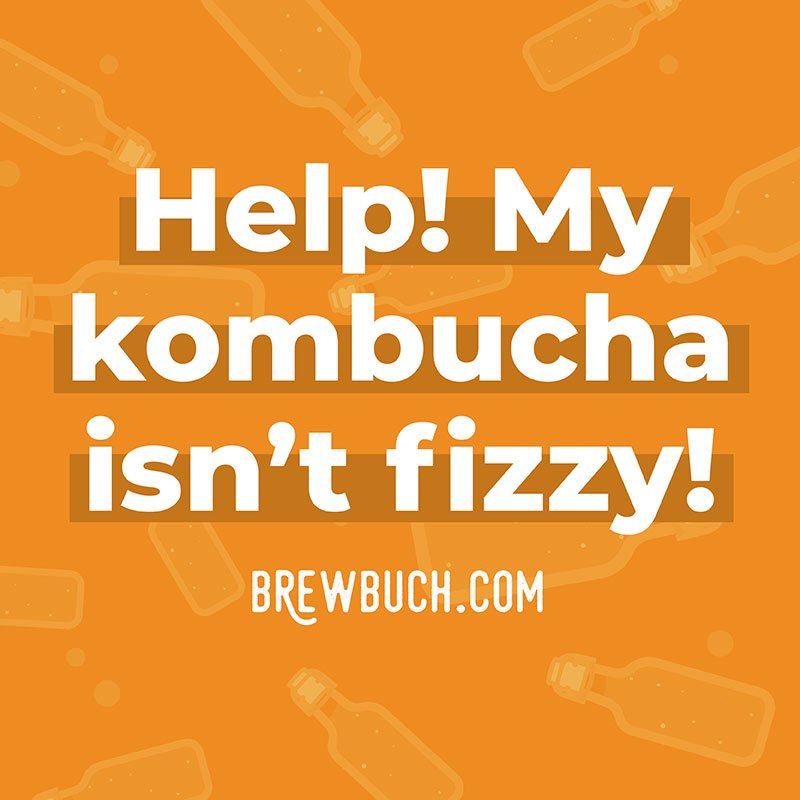
There’s nothing quite like the proud feeling of achievement when you crack open a bottle of fizzy homemade kombucha, all carbonated and bubbly and delicious. The flip side, of course, is when your kombucha isn’t fizzy and you start to wonder where you went wrong (in kombucha? in life?).
So for all the folks with a sad bottle of flat kombucha on your hands (we’ve all been there), this is your troubleshooting guide to help you achieve carbonated kombucha success!
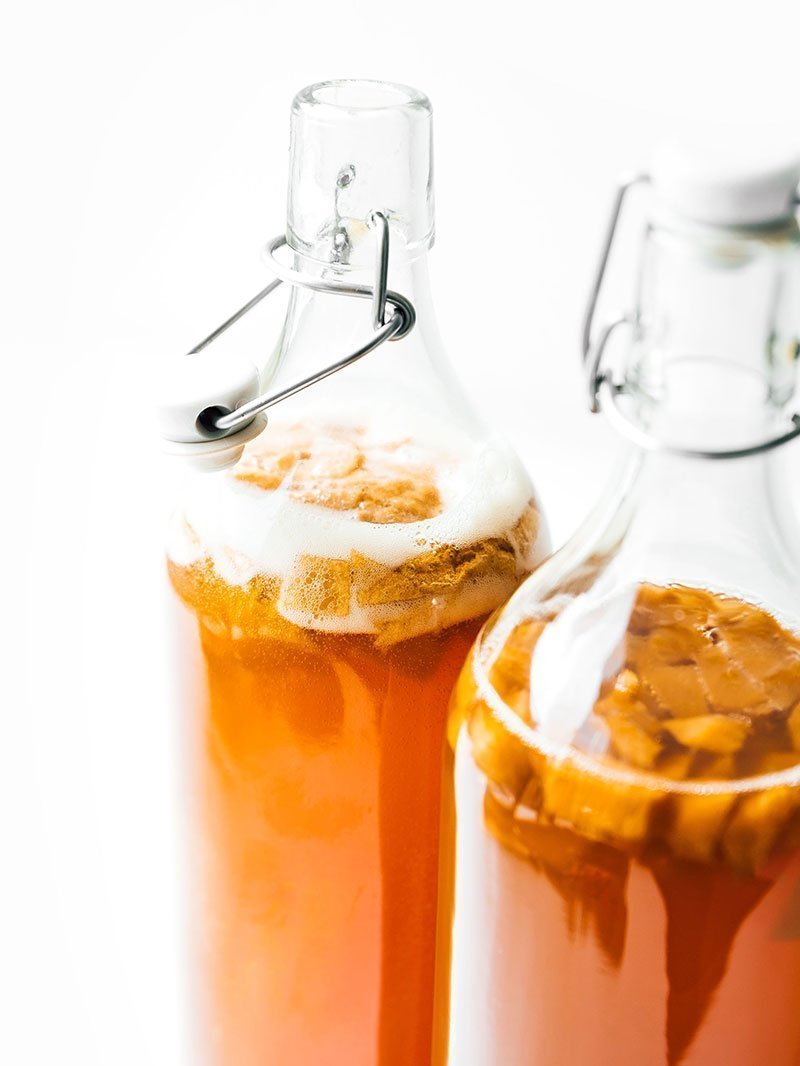
What is carbonation?
Carbonation, put simply, is carbon dioxide (CO2) dissolved in a liquid. In kombucha, the yeasts in your brew eat the sugar and use it to produce alcohol and CO2.
In the first fermentation, the kombucha is covered only with a cloth, meaning the CO2 can escape and doesn’t stay in the liquid. That’s why we do a second fermentation, sealing the kombucha in airtight bottles and trapping the CO2 in the kombucha.
This method of carbonation is called natural carbonation. Another method is called forced carbonation, and this is when machines are used to artificially add carbonation to a drink. Drinks with forced carbonation include carbonated water, soda, and even most store bought kombucha.
While natural carbonation produces a soft feeling, with smaller bubbles and less tingle, forced carbonation is just the opposite. Forced carbonated drinks are usually sharp feeling, with large, uniform bubbles. This is an important distinction, in that you should not expect your home brewed kombucha to have the carbonated feeling of a soft drink.
With that said, you can make some seriously carbonated and fizzy kombucha. Here’s how!
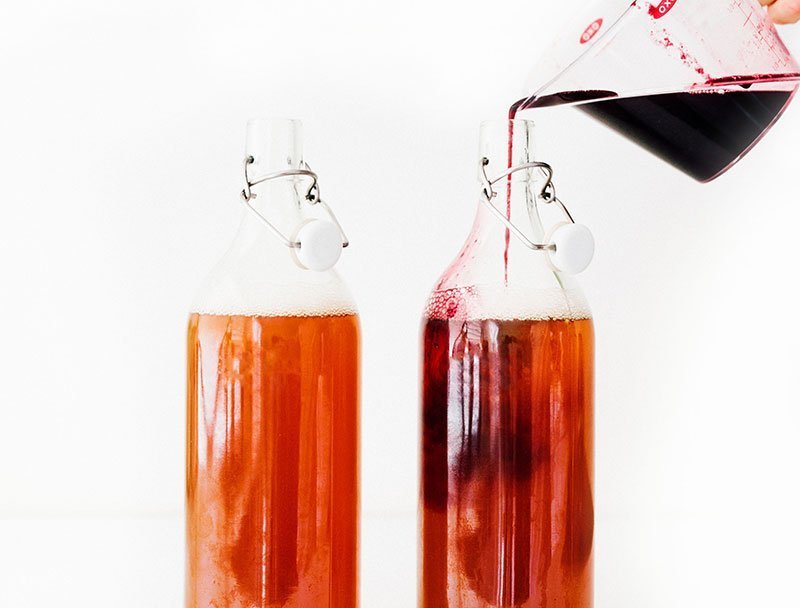
How to carbonate kombucha
To carbonate kombucha, you’ll essentially just transfer your uncarbonated kombucha into airtight bottles, add something sweet as “food”, seal shut, then wait for the bacteria and yeasts to work their magic!
While some carbonation does occur in the first fermentation (the SCOBY can create a light seal, trapping a little fizz in the brew), most of it occurs in the second fermentation Read more about how to brew kombucha here.
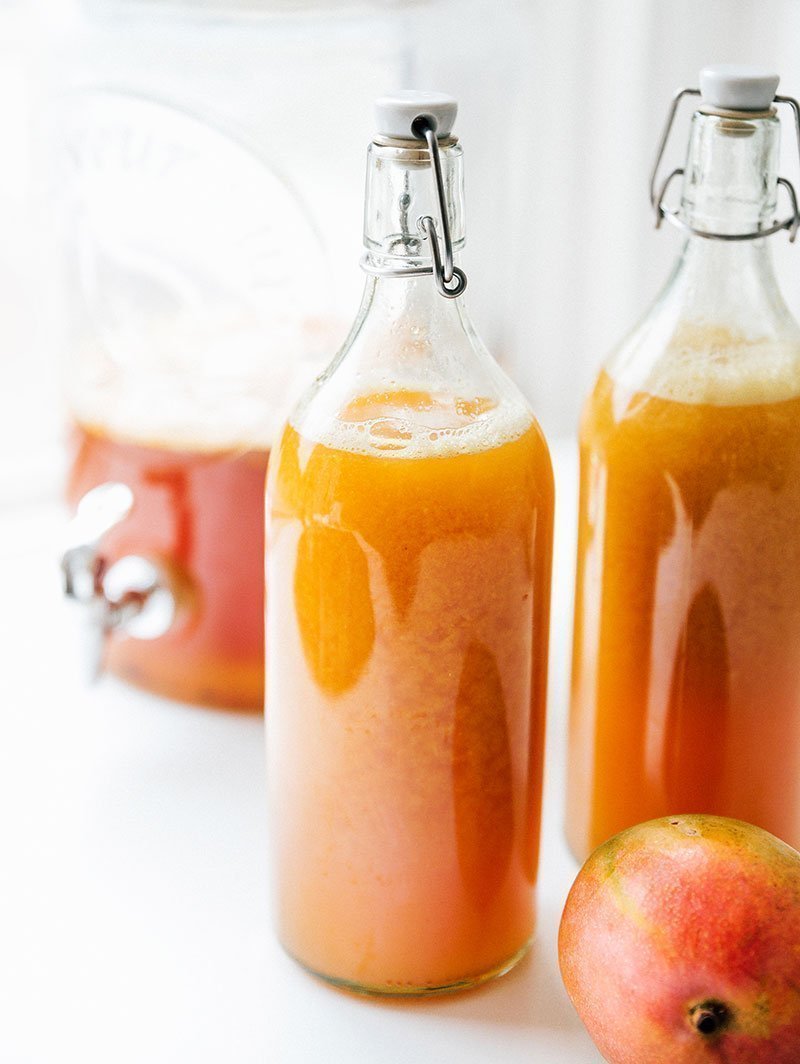
So why isn’t my kombucha fizzy?
This brings us to our question of the hour – why isn’t your kombucha fizzy? This is one of the most common questions we get in our kombucha Facebook group. There are numerous reasons why your kombucha might not have carbonation:
1. You’re not using the right bottles.
You need to use fermentation grade bottles to brew kombucha, as these are specifically designed to not only trap air in, but withstand the pressure build up without exploding or leaking. These flip top bottles and these bottles are both great. For the best buch, avoid decorative bottles and mason jars.
2. You need to adjust your first fermentation time.
Your first fermentation needs to run long enough that there are plenty of bacteria and yeasts built up in the kombucha – these power the carbonation reaction. On the other hand, you should ensure your first fermentation isn’t going so long that your kombucha tastes sour/vinegary – there needs to be some sugar left for the yeast to feed on to help power the carbonation.
3. You’re not letting the second fermentation go long enough.
This one is simple; you may just need to let it (second) ferment longer! A typical second fermentation takes 3 to 10 days, but this could take more time depending on the sugar content and temperature of your house.
4. Your fermentation station is too cold.
Fermentation slows down dramatically when the environment is cold. Ensure your kombucha bottles are somewhere relatively warm (68-78°F). For the winter months, this might mean investing in kombucha heating pads, or finding a warm area in your house (e.g. above the fridge, by a heater, or in the laundry room). Read more on ideal kombucha temperatures here.
5. You’re leaving too much air in the bottles.
It’s important to leave some head space (empty space) at the top of the bottles before sealing, which will act as a buffer for the pressure (and in turn prevent explosions). With that said, if you leave too much head space, the CO2 simply stays in the air inside the bottle rather than going into the kombucha, resulting in less fizz. Aim for about 1 to 2 inches of head space (this entirely depends on the bottle shape and size, so you may need to adjust as you settle into a fermentation routine).
6. You’re not stirring the kombucha before bottling.
If you’re pouring the kombucha straight from the fermentation jug into the bottles (and especially if you’re using a spigot, like in continuous brewing), then the bacteria and yeast are not being evenly distributed into the bottles. Be sure to give your kombucha a stir before bottling so that every jar can be equally full of that live yeast and bacteria power! This also mixes oxygen into the kombucha, which helps to stimulate the process of carbonation.
7. You’re filtering the kombucha before bottling.
By all means, filter the gunk out of the kombucha after the second fermentation, but not before! You want to get all those brown stringy bits (the yeast!) into your second fermentation bottles as well. These will do wonders for the carbonation and fizz.
8. Your tea isn’t strong enough.
It could be that your first fermentation brew just isn’t strong enough. Either add a few more bags of tea, or let the tea steep for longer to infuse your brew with more “food” for the bacteria and yeast.
9. You’re not adding fruit or sugar.
Adding mashed fruits, juices, sugar, or honey not only add flavor, but they are instrumental in carbonating your kombucha. They act as “food” sparking the reaction that creates carbonation. (Pro tip: for maximum fizz, add ginger!) See our favorite kombucha flavors here!
10. You’re burping the bottles too much.
I get it, the idea of a bottle exploding is a little scary (and cleaning up the mess that results? even more so). But if you’re burping your bottles daily to avoid potential catastrophe, you may be doing a disservice to your carbonation. Try holding off on burping your second fermentation bottles for 2 or 3 days if you’re having issues with kombucha not carbonating. (Worried about explosions? Grab a few of these carbonation caps to allow out excess pressure!)
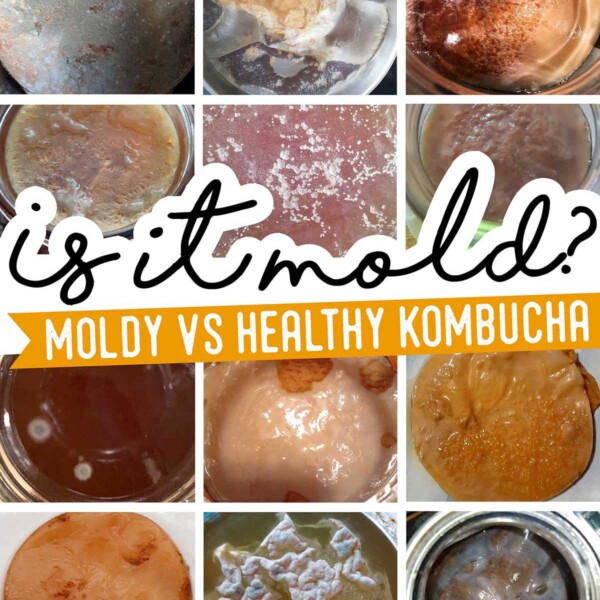
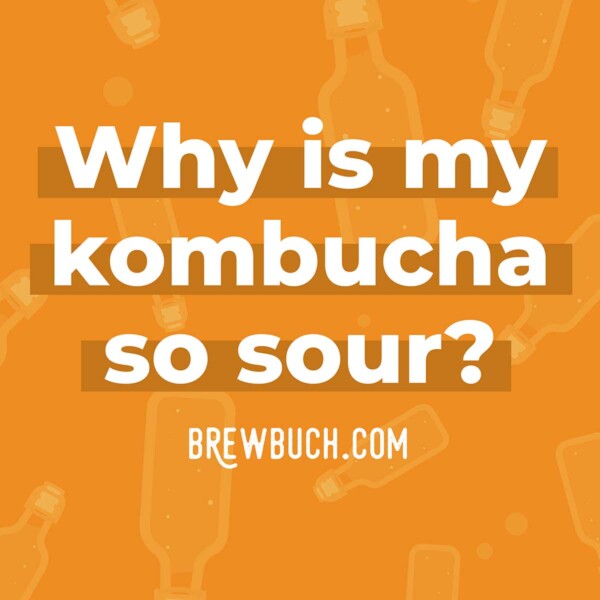
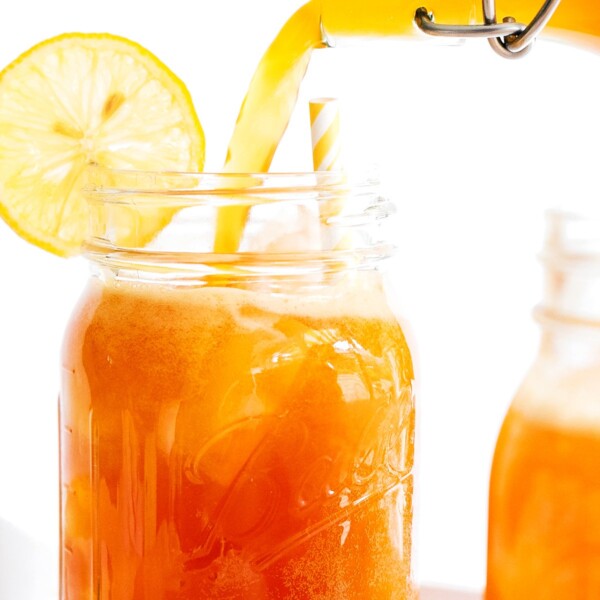
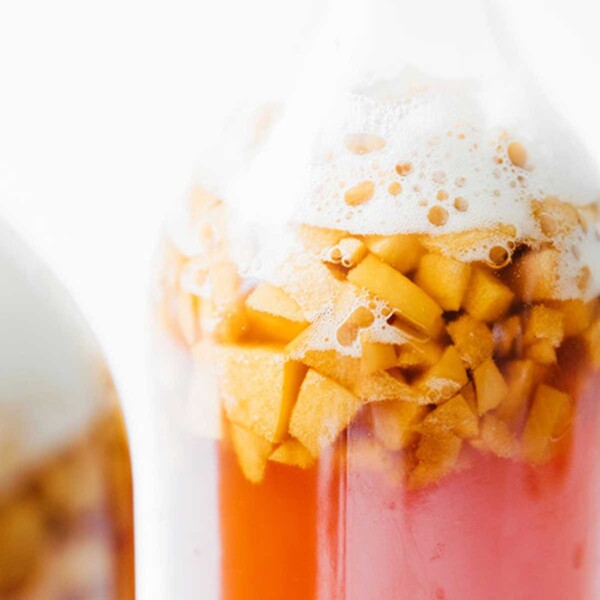
This has been most helpful. And it all worked with fuzzying my drink…..
My problem comes with after it is to the carbonation I want..Tons of carbonation and it is perfect. Then…I put it in
the refrig to stop it continuing and it becomes UN-carbonated. and drops back to almost non-existent. I can tell because all the fruit and flavoring drops back down to the botton.
SHOULD I NOT PUT IT IN THE FRIDG THEN?
I would still store it in the fridge, but you could leave it out at room temp for a few hours as needed to recarbonate it!
What perfect timing for the article. My last batch had some bottles that were fizzy and some not. I’m wondering if I moisten the gasket on the stopper if I would get a better seal on the bottle (assuming that may be one of my problems). Any thoughts?
I haven’t thought of this before but it could work! Just so long as you moisten with kombucha rather than water (which could lead to mold issues possibly?)
Hey Sarah, I tried revamping my scoby with 2 bottles of GTS original and unfortunately had no luck getting my kombucha fizzy again. One thing I did notice is when I was draining the last of my kombucha, to start the new batch with the GTS kombucha, that the bottle with an excessive amount of culture was fizzy…
I also got one one bottle from the “store bought” batch to get fizzy which I accomplished by: leaving it at room temp in the pop top bottle with fruit as the second fermentation for 6 days. But when I tried the same process but put it in the refrigerator on day 6, no carbonation. I also tried another room temp one that I 2nd fermented with food grade lavender (one of my favs) instead of fruit and also had no fizz. Hmmm I am stumped! What do you think? Thank you so much for your constant feedback!
It sounds like the bottles with fruit (vs lavender, which has no sugar) are fermenting better. And then the bottles with excessive culture (yeast build up) too? If that’s the case, I would give your vessel a good stir before bottling to help distribute all the culture evenly into bottles, then 2F with something containing sugar! Worst case you might try a different bottle for 2F. Good luck!
Hi Sarah,
You helped me on a different post a little while ago, my scoby had been left for 3 months and I didn’t feed it enough sugar in it’s hotel. You told me my scoby may have died but we established that it had enough culture to make a new scoby. Sure enough a new scoby formed and it seems to be thriving.
However, ever since it came back to life my kombucha hasn’t been fizzy. My typical recipe is 1 gallon of water, 8 black tea bags, and 1 cup of sugar. F1 for about 10-12 days, F2 for about 3 days. If I add fruit I do get a tiny bit of carbonation when I open my pop top bottles, but not enough to fizz. If I use tea or other non sugary flavoring, I have zero carbonation.
I read an article that said too much sugar can actually cause it to create more alcohol and less carbonation. So I tried 1/2 cup of sugar, no luck. It suggested adding the sugar half way through F1, no luck.
I don’t strain it until it is served and I do mix it before I dispense (continuous brew).
Any suggestions!? Thank you so so much for your insight!
-Katie
It could be in need of a revamp with some fresh kombucha. Try using a bottle of store bought kombucha instead of 2 cuos reserved from your previous batch. This should reintroduce some strong bacteria and yeast to hopefully get things going again!
Just bottled my 1st batch of Kombucha. Each bottle has honey and ginger plus berries. I am using long neck 16oz swing top bottles. I left most of the neck for air space. After 4 days there is no carbonation but I seem to have little scobies forming on top. Should I add more liquid from my scoby hotel? Should I remove the little scobies? If little scobies are forming, shouldn’t it be warm enough for carbonation?
Yep if SCOBYs are forming then a fermentation is happening. Perhaps fill the bottles a little more, or try a different bottle to rule out the possibility of air leaking from the bottles.
hi Sarah, thank you for your wonderful site and all the information you have shared, I do have a question though, my scoby and kombucha had been forgotten and left in the cupboard for possibly over 10 months and man doesn’t it smell like really really strong vinegar, phew, but it looked like a dead scoby was floating on the bottom with some slimy stuff in between and 3 scobys on the top, the bottom one of the 3 didn’t look the safest so i split the top one off ,gave it a rinse and put it in a new bottle with fresh tea and some fruit juice and a teaspoon of sugar, it appears to be making bubbles and the scoby has grown to almost cover the entire area of the new bigger bottle, my questions are ,, will the new stuff be safe to drink, ? should I have done what I did?, is there anything else I should do ? and there is a metal lid on the bottle, should I change it to a piece of cloth ? , regards Bryan.
Hi Bryan! As long as there isn’t any sign of mold, it should be fine! I would put a cloth covering on top though versus something airtight 😀
Great tips!! Thanks a lot!!
I wonder about alcohol content if I leave it to ferment too long? Or add too much fruit (sugar)? Don’t want tipsy buch!!
Here is some info on the alcohol content of kombucha! 😀
I’ve been successfully brewing for a year, but for the past few brews my SCOBYs have been sinking to the bottom of the brew jar from the get-go (tea is at room temperature). A new SCOBY is forming on each jar, but excruciatingly slowly, more like a thin film after 7 days, and the tea is still too sweet for F2. I am using heating pads so I know my brew is warm enough. Could my SCOBYs just be worn out after a year in a hotel? Thanks for your helpful advice!
It could use some replenishing – maybe add a bottle of store bought to re-introduce some kombucha bacteria and yeast!
Thanks so much for responding! First batch came out great! Excited to try more flavors!
Several questions…first batch.
1. If strawberry purée stays on top of bottle, do i shake it gently or just leave it as is? Once a larger kombucha bottle is opened, does it lose carbonation after a few days?
2. I used 4 English Breakfast teabags and 4 passion fruit teabags for F1 – Is this ok? I forgot that herbal teas weren’t recommended. The initial SCOBY split into 2 separate 1/4” layers (when i grew it), AND another SCOBY formed on top at the end of F1 (but so full that it was only the size of the gallon jar opening)….leaving 3 SCOBY’s in the gallon jar. I’ve bottled/flavored for the F2. Now do I leave ALL 3 of the SCOBY’s in with the starter? Will it need more sugar because there’s more SCOBY to eat it?
3. When brewing next batch, do i have to remove SCOBY/starter before adding sweet tea, or can I just leave it all in the jar and add the sweet tea to simplify a step?
4. Instead of boiling water to sanitize bottles, can i rinse under hot, hot tap water, or would i be letting bacteria from pipes possibly ruin the batch?
Sorry so many Q’s….trying to get this down and not use quite so much time.
Thanks for your great guide and tips!!
Excited!
Hi Lori!
1. You can gently flip the bottle to incorporate the berries in the buch. After opening, it will lose some carbonation, but you can always seal it back up and let it sit at room temp to recarbonate.
2. I would avoid herbal teas going forward. But you can leave all the SCOBYs in there, they don’t need anymore food than just 1 would.
3. You can leave the SCOBY in there while you add thee new tea, so long as it isn’t hot.
4. Boiling is best!